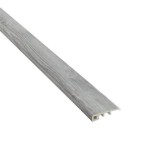Underlayment is an important component of any laminate floor installation. The underlayment provides a protective layer between the laminate floor and the subfloor. It helps to create a smooth, even surface for the laminate flooring, and it helps to protect the subfloor from moisture, heat, and other damage. In this article, we will discuss why underlayment is important, what types of underlayment are available, and how to install it.
Why is Underlayment Important?
Underlayment is an important part of any laminate floor installation because it helps to create a smooth, even surface for the laminate flooring. It also helps to protect the subfloor from moisture and heat. Without proper underlayment, the laminate floor may not be able to stick properly to the subfloor, or it may warp or buckle due to moisture or temperature changes. In addition, without proper underlayment, the laminate flooring may be more prone to scratches and dents. Overall, underlayment helps to ensure that the laminate flooring is installed correctly and will last for many years.
Types of Underlayment
There are several different types of underlayment available for laminate flooring. The type of underlayment you choose should be based on the type of subfloor you have and the type of laminate flooring you are installing. The most common types of underlayment are foam, cork, and felt.
- Foam Underlayment: This type of underlayment is made of foam, which is lightweight and easy to install. It helps to protect the subfloor from moisture and heat, and it also helps to reduce sound. Foam underlayment is relatively inexpensive and is a great option for most types of subfloors.
- Cork Underlayment: Cork underlayment is made from cork, which is a natural material that is very durable and resistant to moisture. It helps to reduce the noise of footsteps and is perfect for laminate flooring installations on concrete subfloors. Cork underlayment is more expensive than foam, but it is worth the extra cost.
- Felt Underlayment: Felt underlayment is made from a synthetic material like polyester or nylon. It is lightweight and easy to install, and it helps to protect the subfloor from moisture and heat. Felt underlayment is a great option for laminate flooring installations on wooden subfloors.
How to Install Underlayment
Installing underlayment is relatively simple and can be done in a few steps. First, measure the area where the laminate flooring will be installed and cut the underlayment to size. Next, attach the underlayment to the subfloor using an adhesive. Finally, lay the laminate flooring on top of the underlayment and secure it with nails or staples. Be sure to follow the manufacturer’s instructions when installing the underlayment.
Advantages of Underlayment
Underlayment has several advantages. It helps to create a smooth, even surface for the laminate flooring, and it helps to protect the subfloor from moisture and heat. In addition, underlayment helps to reduce the noise of footsteps and makes the laminate flooring more comfortable to walk on. Finally, underlayment can help to reduce the chance of scratches and dents in the laminate flooring.
Conclusion
Underlayment is an important component of any laminate floor installation. It helps to create a smooth, even surface for the laminate flooring, and it helps to protect the subfloor from moisture, heat, and other damage. There are several different types of underlayment available, and the type you choose should be based on the type of subfloor and laminate flooring you are using. Installing underlayment is relatively simple and can be done in a few steps. Overall, underlayment is an important part of any laminate floor installation and can help to ensure that the laminate flooring is installed correctly and will last for many years.





/laying-laminate-flooring-5c36643946e0fb0001102b5b.jpg)

/laminate-flooring-underlayment-1314969-hero-3894e0b403fb4e59a87a076e3da9914f.jpg)
/Laminate-floor-install-GettyImages-154961561-588816495f9b58bdb3da1a02.jpg)

/laying-laminate-flooring-5c36643946e0fb0001102b5b.jpg)




Related Posts








